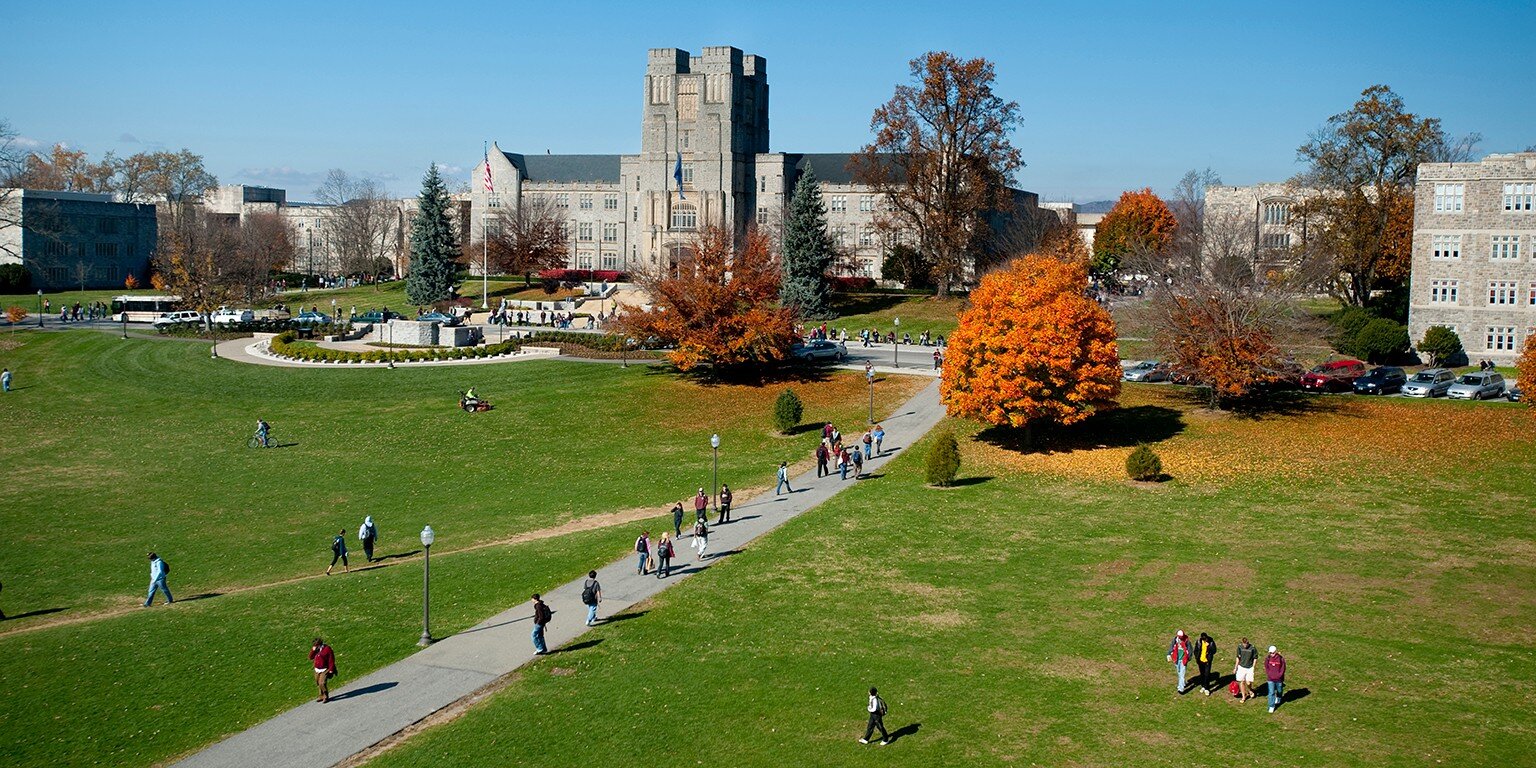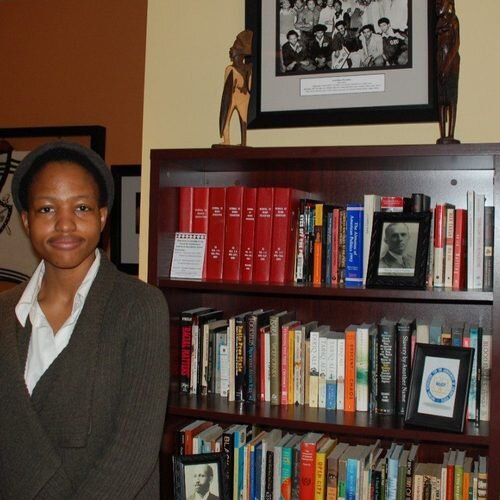EXHIBIT
CREATING HOME
BLACK INCLUSION AND COMMUNITY BUILDING
In this exhibit you can explore the different phases of Solitude’s history. We begin during the period when this place was indigenous land, and go on to explore its history as a slave plantation in the nineteenth century.
The founding of the Black Organization Council (BOC) in 1982 marked a pivotal point in Black student history at Virginia Tech. While the Council of Human Relations had acted as a liaison between Black students and the administration for years, it has been the BOC that has made major headways for Black students on campus since.
In 1984, Black student leaders led by Brian Roberts drafted a proposal for the establishment of the Black Cultural Center (BCC) in Squires Student Center, which was planned to go through extensive renovations in the coming years. A reflection of the increase in Black student enrollment, the proposal sought to offer a safe space for all students on campus to study, socialize, and build community centered around the Black student experience. Lisa Ellison, 1986. An oral history with Ellison can be found here In addition to writing the BCC proposal in 1984, Brian Roberts was a founding member of the NAACP and Black Organizations Council at Virginia Tech. Lisa Ellison served as President of the Black Organizations Council her junior and senior years at Virginia Tech, and thus served as the BOC representative on commission which was responsible for voting on the Black Cultural Center proposal. Originally met with opposition, commission members debated the divisiveness of such a space on campus, with many believing that the BCC would entail the need for Cultural Centers for all groups on campus. Despite the concerns, the proposal passed by a vote of 7-5, with the majority of support coming from other student representatives.
Although originally planned as "a student center located in an area for student organizations on the thrid floor", the BCC was built to be much more. Rather than located on the third floor, the BCC was placed in a prime location on the first floor of Squire Student Center. This not only increased the visibility of Black students on campus, but also has allowed the BCC to serve the needs of Black faculty as well. Deborah Parson, Coordinator for Black Cultural Affairs at the time of the BCC planning, believed that the center could serve as the cultural heart of the entire university, "The Black Cultural Center will be the Virginia Tech's cultural center, not the blacks' center at Virginia Tech... We intend to make the center a meeting place for all people. Everyone who uses it will be enriched by its ambience."
Since its opening in 1991, the Black Cultural Center has served as a homebase and area of refuge for Black and underrepresented students on campus. On an overwhelmingly white campus, the BCC has given Black students a dedicated space on campus to feel accepted and welcome among a community of their peers, with many describing it as a place they can “let their hair down” after traversing a predominately white student body for the majority of their day. Kimberly Williams, alumni and Assistant Director for the BCC, recalled how integral the center was in her success at Virginia Tech, Kimberly Williams (second from right) in the BCC with student and faculty in 2018. An oral history with Williams can be found here Excerpt from article in 1989 Minority Newsletter highlighting Deborah Parson's role in the BCC's development "It was only students and the Black Cultural Center. That was it. Sometimes I could go days without seeing myself, so that's why this place became so important to me. I think without having the center I don't think I would have graduated...to just be around people who are going through the same experiences, but we can share, we can cry together, we can let loose and use slang...it was really important, because once you step out of that space, you put your shield up again."
The BCC has also offered a unique opportunity to translate the Black experience at a predominantly white institution such as VT to white students. When asked by a white student why the Black students needed a separate space on campus, Daniel Levi (‘05) responded, "You are welcome to come in... Some of the social cues will be a bit different because this is where we feel most comfortable, and we’re going to talk the way that we’re accustomed to talking and we will not code switch like you don’t realize we do...Which is to effectively translate my experience to yours. And so it wasn’t supposed to be an exclusionary place.”
Exactly 30 years after they were permitted to live and eat on campus in 1961, Black students finally had a place at Virginia Tech that they could call home. List of Virginia Tech's first eight black students
Charles Johnson (left) with Lindsay Cherry, Charlie Yates, and Essex Finney at the Black Alumni Reunion, March 26 1999 Cadets having their haircut in Squires barbershop, 1957 Lindsay Cherry in Hoge house, 1956
BLACK COMMUNITY ENGAGEMENT IN THE 1960S AND BEYOND BARRIERS OF ENTRY INTO WHITE CAMPUS CULTURE FORGING A STUDENT COMMUNITY A CONSTANT BATTLE BETWEEN INCLUSION AND EXCLUSION ADMINISTRATION PROMOTING DIVERSITY






















